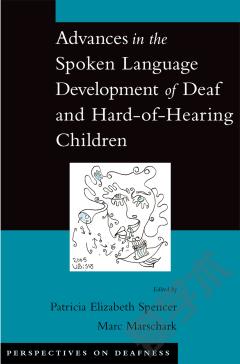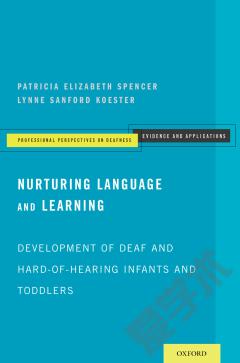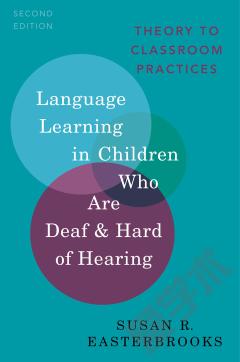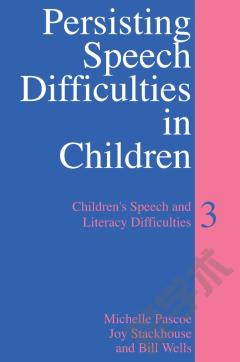Advances in the Spoken-Language Development of Deaf and Hard-of-Hearing Children
Throughout history there have been efforts to help deaf children develop spoken language through which they could have full access to the hearing world. These efforts, although pursued seriously and with great care, frequently proved fruitless, and often only resulted in passionate arguments over the efficacy of particular approaches. Although some deaf children did develop spoken language, there was little evidence to suggest that this development had been facilitated by any particular education approach, and moreover, many, even most deaf children--especially those with profound loss--never develop spoken language at all. Recent technological advances, however, have led to more positive expectations for deaf children's acquisition of spoken language: Innovative testing procedures for hearing allow for early identification of loss that leads to intervention services during the first weeks and months of life. Programmable hearing aids allow more children to make use of residual hearing abilities. Children with the most profound losses are able to reap greater benefits from cochlear-implant technologies. At the same time, there have been great advances in research into the processes of deaf children's language development and the outcomes they experience. As a result, we are, for the first time, accruing a sufficient base of evidence and information to allow reliable predictions about children's progress that will, in turn, lead to further advances. The contributors to this volume are recognized leaders in this research, and here they present the latest information on both the new world evolving for deaf and hard-of-hearing children and the improved expectations for their acquisition of spoken language. Chapters cover topics such as the significance of early vocalizations, the uses and potential of technological advances, and the cognitive processes related to spoken language. The contributors provide objective information from children in a variety of programming: using signs; using speech only; using cued speech, and cutting-edge information on the language development of children using cochlear implants and the innovations in service provision. Along with its companion volume, Advances in Sign-Language Development of Deaf Children, this book will provide a deep and broad picture of what is known about deaf children's language development in a variety of situations and contexts. From this base of information, progress in research and its application will accelerate, and barriers to deaf children's full participation in the world around them will continue to be overcome.
{{comment.content}}








 京公网安备 11010802027623号
京公网安备 11010802027623号